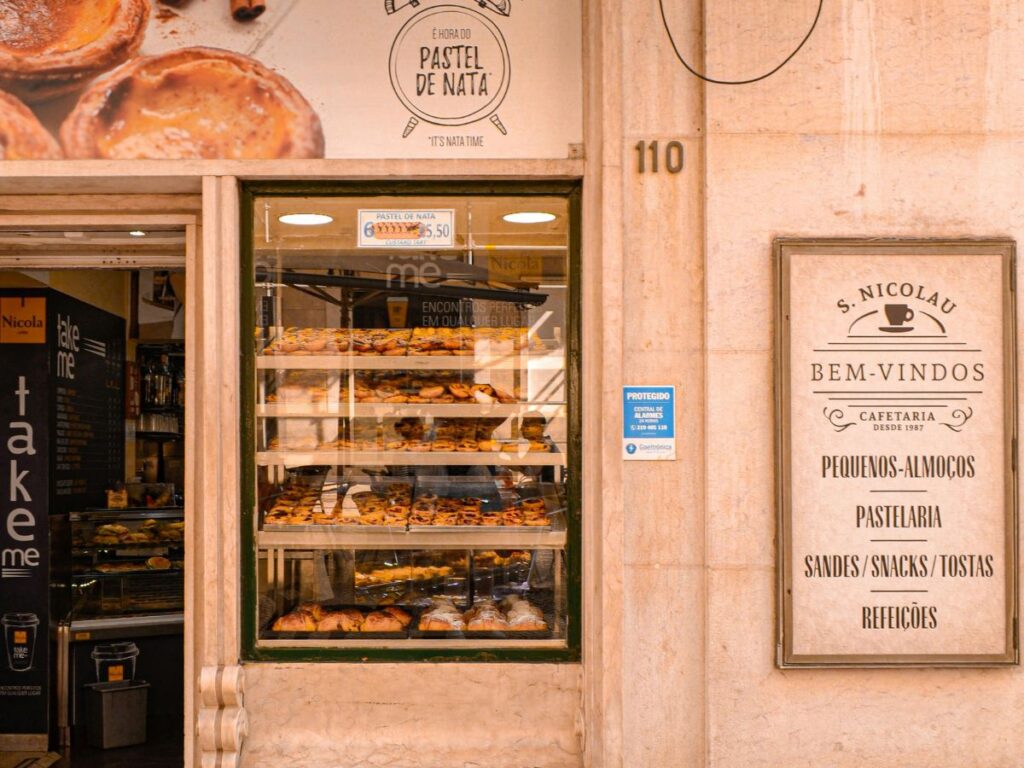Tucked away in the heart of Toronto, The Annex in Old Toronto is where history, culture, and vibrant city life blend effortlessly. Known for its stunning Victorian homes, tree-lined streets, and intellectual energy, this neighborhood has long been a favorite among students, artists, professionals, and families alike. With the University of Toronto as its neighbor and a thriving mix of art galleries, indie bookstores, and cozy cafés, it’s easy to see why many consider The Annex one of the best neighbourhoods in Toronto. Whether you’re drawn to its charming architecture, rich history, or dynamic atmosphere, The Annex in Old Toronto offers something for everyone. In this guide, we’ll explore what makes this community truly special—and why it continues to rank as Toronto’s best neighbourhood for those seeking an authentic and inspiring urban lifestyle. Ready to discover what makes The Annex a standout in the city? Let’s dive in.
Location and Boundaries
The Annex in Old Toronto is centrally located, making it one of the most desirable and accessible neighborhoods in the city. Geographically, it is bordered by Bloor Street to the south, Dupont Street to the north, Bathurst Street to the west, and Avenue Road to the east. This prime location places it within walking distance of many of Toronto’s key cultural, educational, and recreational landmarks.
The neighborhood sits directly beside the University of Toronto’s St. George campus and is surrounded by other notable communities. To the west lies Seaton Village, a quieter, family-oriented area often mistakenly referred to as the “West Annex.” To the east, you’ll find Yorkville, a luxurious shopping and dining district.
Its central location and excellent public transit options—including access to four major TTC subway stations—make The Annex in Old Toronto a standout among the best neighbourhoods in Toronto, both for residents and visitors seeking convenience, culture, and character. Visit the social media pages (Facebook, Instagram, Twitter) for more information.
Historical Background
The Annex in Old Toronto has a rich and fascinating history that reflects the city’s growth and transformation. The name “The Annex” originates from the neighborhood’s annexation into the City of Toronto in the late 19th century. In 1886, developer Simeon Janes purchased land between Bedford Road and Spadina Road and petitioned for it to be added to the city. The following year, Toronto City Council approved the annexation, giving the area its now-iconic name.
By the late 1800s, The Annex had become a prestigious residential area, attracting Toronto’s elite. Early residents included Timothy Eaton, founder of the Eaton’s department store, and George Gooderham of the Gooderham & Worts Distillery. Their grand homes helped shape the architectural identity of the neighborhood.
In the 1960s, The Annex in Old Toronto played a critical role in opposing the proposed Spadina Expressway, a project that would have cut through the community. Thanks to strong grassroots activism, the expressway was halted—preserving the neighborhood’s character and unity.
Over the decades, The Annex has evolved from an enclave of the wealthy to a diverse and inclusive area, now home to students, professionals, artists, and longtime residents. Its deep roots, strong sense of community, and architectural legacy are just a few reasons why it continues to be one of the best neighbourhoods in Toronto.
Architectural Significance
One of the defining features of The Annex in Old Toronto is its remarkable architectural heritage. The neighborhood is home to a unique blend of styles, with many houses built between 1880 and the early 1900s. Among the most notable are the “Annex Style” homes, a distinctly Torontonian architectural form that merges the bold arches of Richardsonian Romanesque with the ornate details of Queen Anne Revival.
These homes are typically large, constructed with red brick and Credit Valley sandstone, and feature decorative turrets, wide rounded arches, and intricate woodwork. The style was pioneered by Edward James Lennox, a celebrated Toronto architect who also designed Old City Hall. His work at 37 Madison Avenue helped shape the visual identity of the neighborhood.
In the mid-20th century, architect Uno Prii brought a modernist touch to The Annex, designing expressive, sculptural mid- and high-rise apartments that still stand out today.
Thanks to active preservation efforts, over 500 buildings in The Annex in Old Toronto are now protected by heritage designation. These efforts have helped maintain the area’s historic charm while supporting responsible urban growth. This architectural richness is a major reason why many consider The Annex one of the best neighbourhoods in Toronto, and even Toronto’s best neighbourhood for those who appreciate character, history, and timeless design.
Demographics and Community
The Annex in Old Toronto is home to a diverse and vibrant population. According to the 2021 Census, the neighborhood has approximately 14,149 residents, with a population density of around 9,685 people per square kilometer. This high density reflects the area’s mix of historic homes, low-rise apartments, and mid-rise residential buildings.
A defining characteristic of The Annex is its high proportion of renters—about 70% of residents rent rather than own their homes. This makes it especially attractive to students, young professionals, and individuals seeking flexible urban living options.
The community is notably multicultural, although immigration levels are lower compared to other parts of Toronto. Many residents are from the United Kingdom, the United States, and Eastern Europe, contributing to the neighborhood’s international feel.
With its proximity to the University of Toronto, The Annex in Old Toronto draws a unique blend of students, academics, artists, and long-time locals. This diverse social fabric plays a big part in making it one of the best neighbourhoods in Toronto, celebrated for its inclusivity, community spirit, and cultural vibrancy.

Lifestyle and Atmosphere
The Annex in Old Toronto offers a lifestyle that’s vibrant, eclectic, and deeply rooted in the city’s cultural identity. Its walkable streets are lined with towering trees, charming Victorian homes, and an ever-changing mix of people that gives the neighborhood a dynamic and welcoming feel.
By day, the area buzzes with a relaxed café culture, where students and locals sip coffee at indie spots and browse through independent bookstores and art galleries. As the sun sets, The Annex comes alive with a different energy—its bars, music venues, and cozy restaurants attract a diverse crowd looking for laid-back entertainment and local flavor.
The neighborhood’s unique blend of heritage architecture, intellectual life, and cultural richness is what makes many consider it Toronto’s best neighbourhood. Whether you’re enjoying a quiet afternoon in a park or a lively evening on Bloor Street, it’s easy to see why The Annex in Old Toronto ranks among the best neighbourhoods in Toronto for those who crave authenticity, community, and urban charm.
Education and Institutions
The Annex in Old Toronto is deeply connected to the city’s academic and cultural scene, making it a hub for learning, creativity, and personal growth. One of its most defining features is its close proximity to the University of Toronto’s St. George campus. The neighborhood borders the university grounds, making it a natural home for student residences, fraternity and sorority houses, and many members of the university’s faculty.
Educational and cultural institutions are a major part of what makes The Annex one of the best neighbourhoods in Toronto. The Royal Conservatory of Music, located near Bloor Street, is internationally respected for its music education programs and performance venues. It adds an artistic depth to the neighborhood and hosts world-class performances throughout the year.
The Spadina Road Public Library is another key institution in the area, offering resources, programs, and a community space for both residents and students.
This strong presence of education and culture further reinforces The Annex in Old Toronto as Toronto’s best neighbourhood for those who value intellectual life, artistic expression, and access to top-tier institutions.
Parks and Recreation
The Annex in Old Toronto offers a variety of parks and recreational spaces that enhance the neighborhood’s livability and charm. Whether you’re looking to unwind in nature, stay active, or enjoy a peaceful stroll, this community delivers plenty of options.
One of the most beloved outdoor spaces is Philosopher’s Walk, a scenic, tree-lined pathway that winds through the University of Toronto’s St. George campus. This peaceful trail runs from the Royal Ontario Museum to The Royal Conservatory of Music and follows the historic path of the buried Taddle Creek. It’s a favorite spot for quiet reflection and casual meetups.
Just west of The Annex, in Seaton Village, is Vermont Square Park. This family-friendly park features a playground, wading pool, and green space perfect for kids and community events.
For fitness enthusiasts, the University of Toronto’s Athletic Centre offers extensive facilities, including pools, gymnasiums, an indoor track, and more. Nearby, the Miles Nadal Jewish Community Centre provides inclusive fitness, arts, and wellness programs for all ages.
With such diverse offerings, The Annex in Old Toronto easily ranks among the best neighbourhoods in Toronto for recreation, wellness, and outdoor enjoyment.

Arts and Culture
The Annex in Old Toronto is a cultural cornerstone of the city, offering an impressive mix of museums, theaters, galleries, and bookstores. Its deep connection to Toronto’s artistic and intellectual life is one of the reasons it’s frequently named among the best neighbourhoods in Toronto.
At the heart of the neighborhood is the Royal Ontario Museum (ROM), one of the largest and most renowned cultural institutions in Canada. Located at the corner of Bloor Street and Queen’s Park, the ROM offers world-class exhibits in art, culture, and natural history—just steps away from the vibrant streets of The Annex.
Film lovers frequent the Hot Docs Cinema, a historic theatre dedicated to documentary film. It’s a key venue for the annual Hot Docs Festival and regularly screens thought-provoking films from around the world.
Local creativity thrives in independent spaces like BMW Books, one of Canada’s largest discount bookstores, and Alternative Arts, a long-standing shop offering custom framing, prints, and vintage posters. These spots are cultural gems that reflect the neighborhood’s artistic spirit.
Also located in The Annex in Old Toronto is the Native Canadian Centre of Toronto, a welcoming space offering cultural programs, workshops, and events rooted in Indigenous traditions. As Toronto’s oldest Indigenous community organization, it plays a vital role in preserving and sharing Indigenous culture in the city.
This diverse mix of cultural institutions, local art spaces, and historical venues makes The Annex a standout among the best neighbourhoods in Toronto for arts, heritage, and lifelong learning.
Shopping and Dining
The Annex in Old Toronto is a true haven for food lovers, boutique shoppers, and culture seekers. At its core is the Bloor Street Cultural Corridor, a vibrant stretch that offers everything from museums and theatres to restaurants and retail shops—all within walking distance.
Shoppers can explore an eclectic mix of local boutiques, vintage stores, bookstores, and gift shops. Highlights include BMW Books, known for its vast collection of discounted and second-hand books, and Alternative Arts, which specializes in custom framing and unique art prints. These independent stores contribute to the neighborhood’s creative and bohemian vibe.
When it comes to dining, The Annex boasts a rich culinary scene. Opus Restaurant, located on Prince Arthur Avenue, is a high-end European eatery with an award-winning wine list, perfect for special occasions. For authentic Italian fare, Bar Mercurio is a standout with its wood-fired pizzas and fresh, house-made pasta.
Foodies will also love the abundance of independent coffee shops, brunch spots, and global cuisines scattered throughout the area. Whether you’re craving sushi, Middle Eastern, or classic diner-style breakfast, The Annex in Old Toronto has something for every palate.
With its walkable streets and endless options, it’s no surprise that The Annex is ranked among the best neighbourhoods in Toronto for shopping and dining. The combination of character, variety, and community feel makes it an ideal destination for locals and visitors alike.
Transportation and Accessibility
The Annex in Old Toronto is one of the most accessible neighborhoods in the city, offering excellent public transit, pedestrian-friendly streets, and a strong infrastructure for cyclists. Its central location and ease of movement are key reasons it consistently ranks among the best neighbourhoods in Toronto.
The neighborhood is served by four major TTC subway stations: Bathurst, Spadina, St. George, and Dupont. Both Spadina and St. George stations function as interchange hubs, allowing for easy transfers between Line 1 (Yonge-University) and Line 2 (Bloor-Danforth), making commuting across Toronto quick and convenient.
In addition to the subway, streetcar and bus services operate along major routes, including Bathurst Street, Spadina Road, Avenue Road, Dupont Street, and Davenport Road. These options ensure reliable connections to other parts of the city at nearly all hours.
The neighborhood is also highly walkable and bike-friendly, with wide sidewalks, bike lanes, and a compact street grid. Residents can comfortably run errands, dine out, or commute without needing a car—just one more reason The Annex in Old Toronto is considered Toronto’s best neighbourhood for urban living.

Real Estate Overview
The Annex in Old Toronto offers a diverse and highly sought-after real estate market that reflects the neighborhood’s historic charm and modern appeal. As one of the best neighbourhoods in Toronto, it attracts a wide range of buyers and renters looking for a unique urban living experience.
The area is renowned for its beautifully preserved Victorian and Edwardian homes, many of which feature classic “Annex Style” architecture. These large, character-filled properties often include original detailing, high ceilings, and spacious interiors, making them popular among families and heritage home enthusiasts.
In addition to historic homes, The Annex also features mid-rise and high-rise apartment buildings, including designs by noted architect Uno Prii. These buildings offer modern living options while respecting the neighborhood’s architectural integrity.
For those seeking a contemporary lifestyle, condominiums are also available, particularly along Bloor Street and near transit hubs. These newer developments appeal to young professionals and downsizers who want to live in Toronto’s best neighbourhood with access to culture, dining, and public transit.
Whether you’re in the market for a historic mansion, a modern condo, or a rental close to the University of Toronto, The Annex in Old Toronto offers real estate options for every lifestyle—another reason it’s consistently ranked among the best neighbourhoods in Toronto.
Notable Residents
The Annex in Old Toronto has long been home to some of Canada’s most influential figures in literature, politics, activism, and the arts. Its blend of historic charm and intellectual energy has attracted residents who have left a lasting impact on the national stage.
Among the most celebrated is author Margaret Atwood, who has lived in the neighborhood for decades. Her contributions to Canadian literature have earned her international acclaim. Lester B. Pearson, former Prime Minister and Nobel Peace Prize laureate, also lived in The Annex, residing at 12 Admiral Road during the 1920s.
Urbanist and activist Jane Jacobs, known for her groundbreaking work in city planning and her successful fight against the Spadina Expressway, made The Annex in Old Toronto her home from 1971 until her death in 2006.
Other notable residents include environmentalist David Suzuki, acclaimed actress Catherine O’Hara, and various musicians, writers, and academics who continue to enrich the neighborhood’s cultural life.
These prominent figures highlight the neighborhood’s long-standing influence on Canadian arts, culture, and politics, reinforcing why many view The Annex as Toronto’s best neighbourhood for thought leaders, creatives, and changemakers.
Neighboring Areas of Interest
The Annex in Old Toronto is surrounded by several distinctive neighborhoods, each adding its own character and attractions to the area. These nearby communities further enhance the appeal of living in what many consider one of the best neighbourhoods in Toronto.
To the west is Seaton Village, a quieter, more residential area often mistaken as the “West Annex.” It shares many architectural similarities with The Annex and is home to Koreatown, a vibrant stretch along Bloor Street filled with Korean restaurants, bakeries, and specialty shops.
Just east of The Annex, Yorkville offers a completely different vibe with its upscale boutiques, fine dining establishments, art galleries, and luxury condos. Known for its fashion-forward appeal and elegant atmosphere, Yorkville is a hotspot for those seeking high-end retail and real estate.
North of The Annex, you’ll find the iconic Casa Loma, a historic castle and museum, perched on the edge of a residential area that forms part of Midtown Toronto. Its grand architecture and cultural events attract visitors year-round.
With these dynamic and diverse neighbors, The Annex in Old Toronto is uniquely positioned in the heart of the city, offering easy access to some of Toronto’s best neighbourhoods—each with its own lifestyle, history, and charm.
FAQs
- Is The Annex a good area to live in?
Yes, it’s considered one of the best neighbourhoods in Toronto for its walkability, transit access, and vibrant community. - What kind of public transportation is available in The Annex?
The area is served by four subway stations: Bathurst, Spadina, St. George, and Dupont, along with bus and streetcar routes. - Is The Annex walkable?
Absolutely. The Annex is one of Toronto’s most walkable and bike-friendly neighborhoods. - What are the popular places to eat in The Annex?
Popular spots include Opus Restaurant and Bar Mercurio, along with various brunch cafés and international eateries. - What is there to do in The Annex at night?
The neighborhood offers bars, cinemas like Hot Docs, live music, and cozy restaurants for evening outings. - What cultural attractions are nearby?
Nearby attractions include the Royal Ontario Museum, The Royal Conservatory, and the Native Canadian Centre. - What neighborhoods are close to The Annex?
Seaton Village, Koreatown, Yorkville, and Midtown areas like Casa Loma are all nearby.